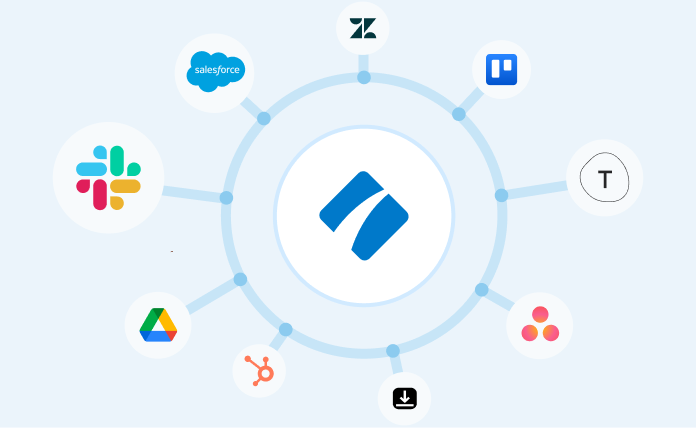
Last week, we showed you 3 of the most popular alternatives to using email for communicating and managing your team – Skype for audio calls, Basecamp for project management and using mobile technology to stay connected on the go. Following on from that post last week, here are 3 more ways to connect with your team without having to deal with the hangups of email.
Asana

Asana puts conversations & tasks together, so you can get more done with less effort.
Asana is a web-based app that allows you to connect with your team and manage projects without the use of email. By focusing on the task in hand, Asana allows you to center your communications and make sure that everyone is working from the same sheet. By utilizing mobile technology, users can communicate with each other through ‘tasks’ as opposed to emails. These are related to specific areas in the project that they are working on and provide a full, clear history of past communication. Much like Basecamp, Asana filters information into a central dashboard that makes it super easy to see an overall of the project and manage all of the project data. Asana provides a completely free service for up to 15 members, which is perfect if you are experimenting with new ways to manage your latest project.
Useful tip:
To help you manage your projects the way you choose, Asana also integrates with a huge variety of other tools that you and your team can utilize:
- Chrome – Using an extension, Asana allows you to easily and quickly add tasks from any web page. Easily share content across the web with your team.
- Dropbox & Google Drive – Obviously integration with cloud storage tools is essential for any remote team.
- WordPress – Display and create alerts for tasks directly inside the WordPress dashboard.
- Google Calendar – Much like the standard iPhone calendar, Asana allows you to set reminders for tasks and invite team members to help them stay on track.
- Click here for a full list
Google hangouts

Google’s video conferencing tool, ‘Hangouts’ is becoming an ever popular way to communicate amongst teams and to hold regular meetings. If you are looking for a free and personal way to communicate with your team, using Hangouts is a good way to get to know new members of your team that you can’t meet in person and onboard them. Using Google Hangouts is perfect for bringing your team together into one ‘meeting’ and is a good practice for any business with remote employees. Unlike Skype, Google Hangouts lets users invite up to 9 additional team members into a video call for free. To host a group video chat on Skype you have to upgrade to their premium service.
With full support across all platforms free of charge, it’s not a surprise why many companies are beginning to use Hangouts to communicate on a larger level with their team and even customers. Above all, Hangouts is the most simple application to use and implement into your business provided you have a Google Plus account which is required for use.
Useful tip:
A particularly excellent feature of Google Hangouts is the ‘Hangouts on air’ feature. This feature allows you to broadcast your conference calls and video conversations worldwide across the internet. This means that anyone with the link is able to watch your broadcast live. On top of that, you can also edit and share a copy of the broadcast with your network. For the purposes of managing a team, this becomes especially useful if you want to save conversations to onboard new members.
If you use Process Street, you could even embed the recorded conference call inside of a process document using YouTube. Click here for more information on getting started with Hangouts on air.
Webex

Webex is the corporate counterpart of both Skype and Google Hangouts. Where Webex comes into its own is with its capacity for group calls. With a Premium100 account, Webex users can host a conference call for up to 100 participants. This is excellent if you have a huge team and is an excellent way to discuss new projects and to update your entire team. On top of its capacity features, Webex includes a vast suite of additional extras including:
- A whiteboard option for brainstorming sessions.
- Desktop and document sharing.
- The ability to record conferences for review with in-app storage up to 1gb for premium users.
- Share a website or application.
- Host a presentation with your team using full annotation features that your team can use interactively.
Webex will set you back a little more than the most popular apps out there but the extra options may be worth paying extra for you and your team. As with any alternative to email you need to try before you buy if you can, but finding the right workflow can mean big things to any business.
Useful Tips:
Be sure to use the free version of the software to test and experiment before hosting presentations or conference video calls. This will limit the amount of problems during a call – essential if you are holding an important meeting with your entire team!
Poll your team. By sharing ideas with your team and getting feedback, you can pinpoint any areas that need to be discussed in the upcoming meeting.
Do you know any other great alternatives to email?







 Workflows
Workflows Forms
Forms Data Sets
Data Sets Pages
Pages Process AI
Process AI Automations
Automations Analytics
Analytics Apps
Apps Integrations
Integrations
 Property management
Property management
 Human resources
Human resources
 Customer management
Customer management
 Information technology
Information technology



Vinay Patankar
CEO and Co-Founder of Process Street. Find him on Twitter and LinkedIn.